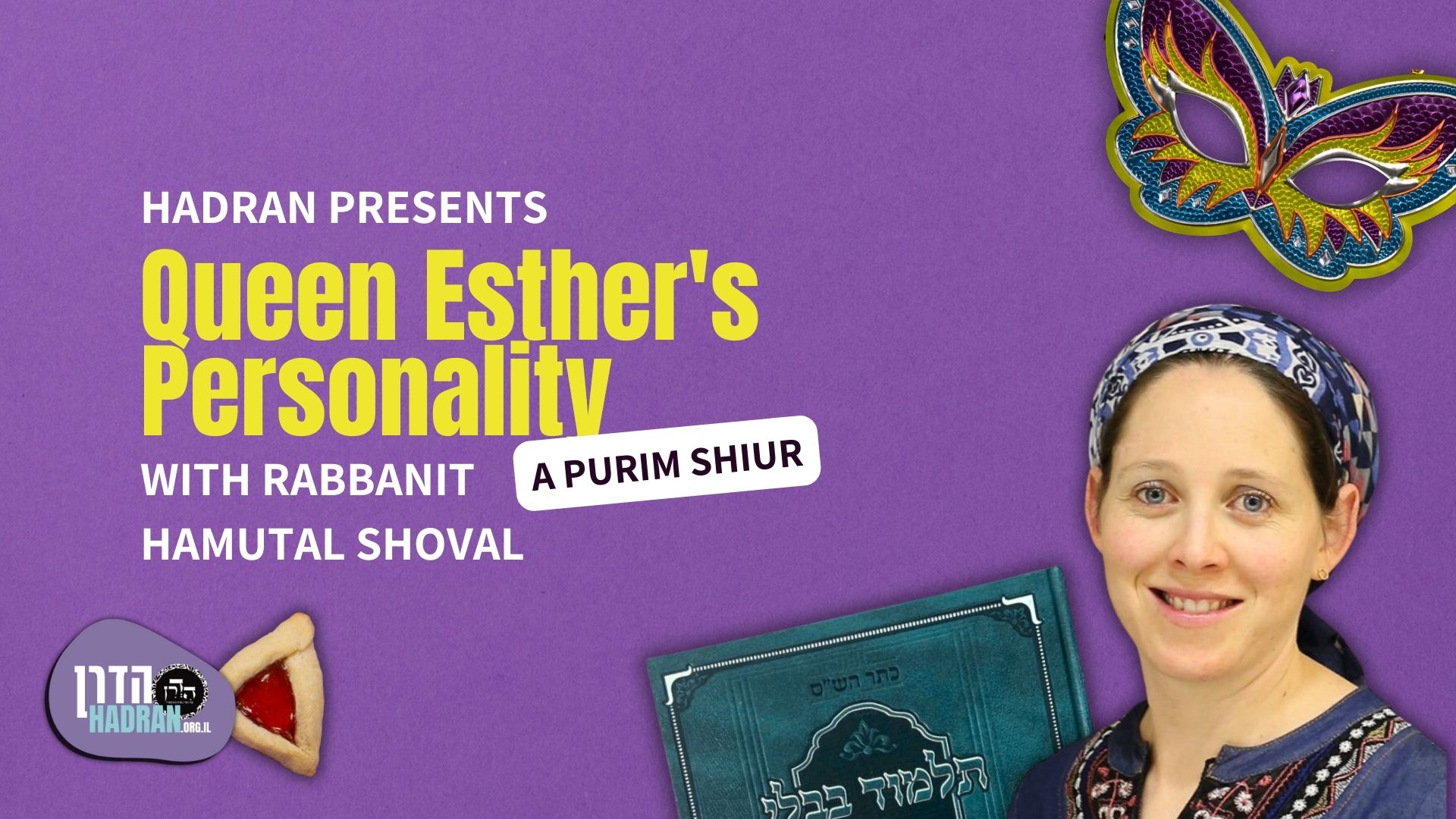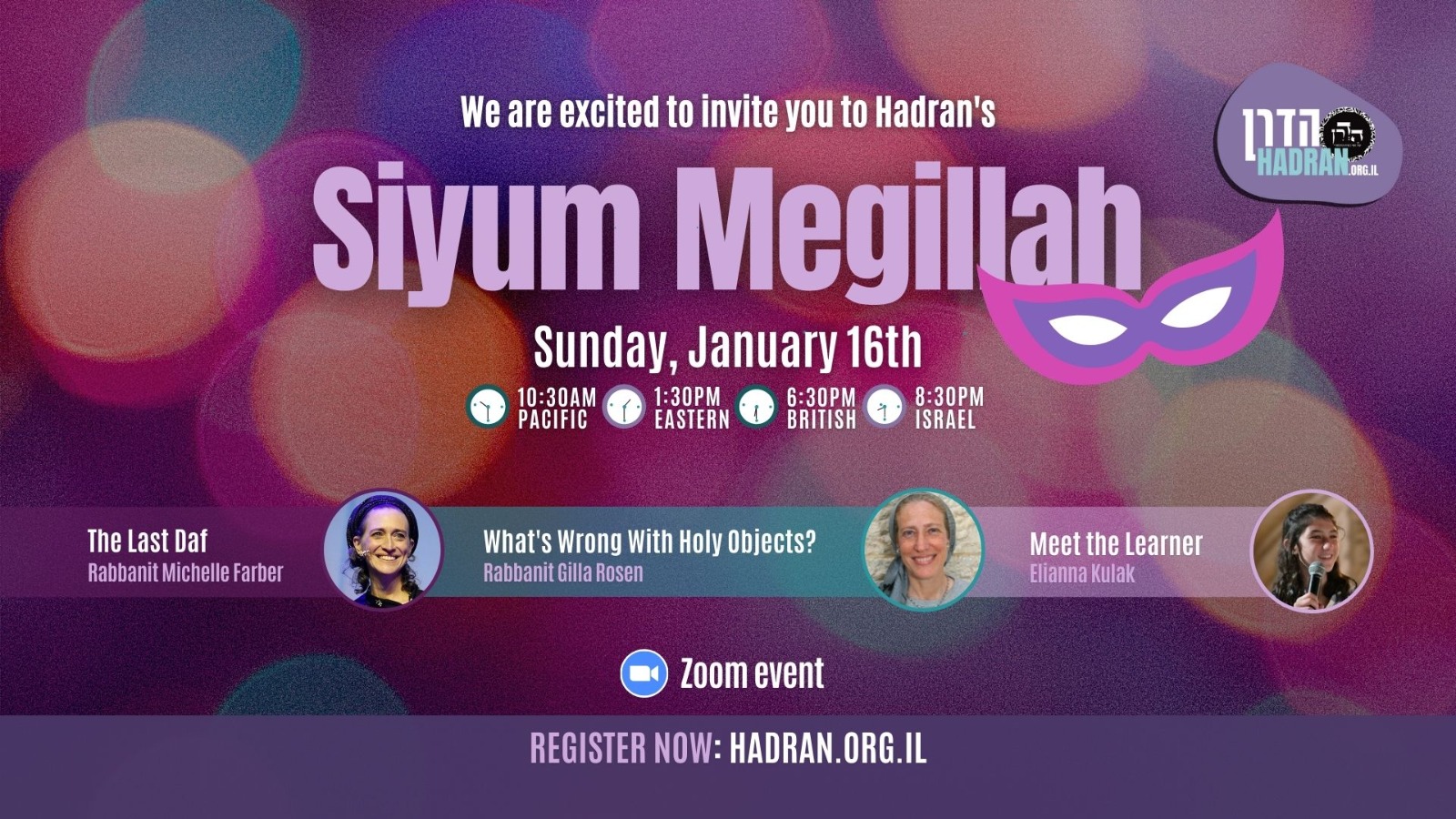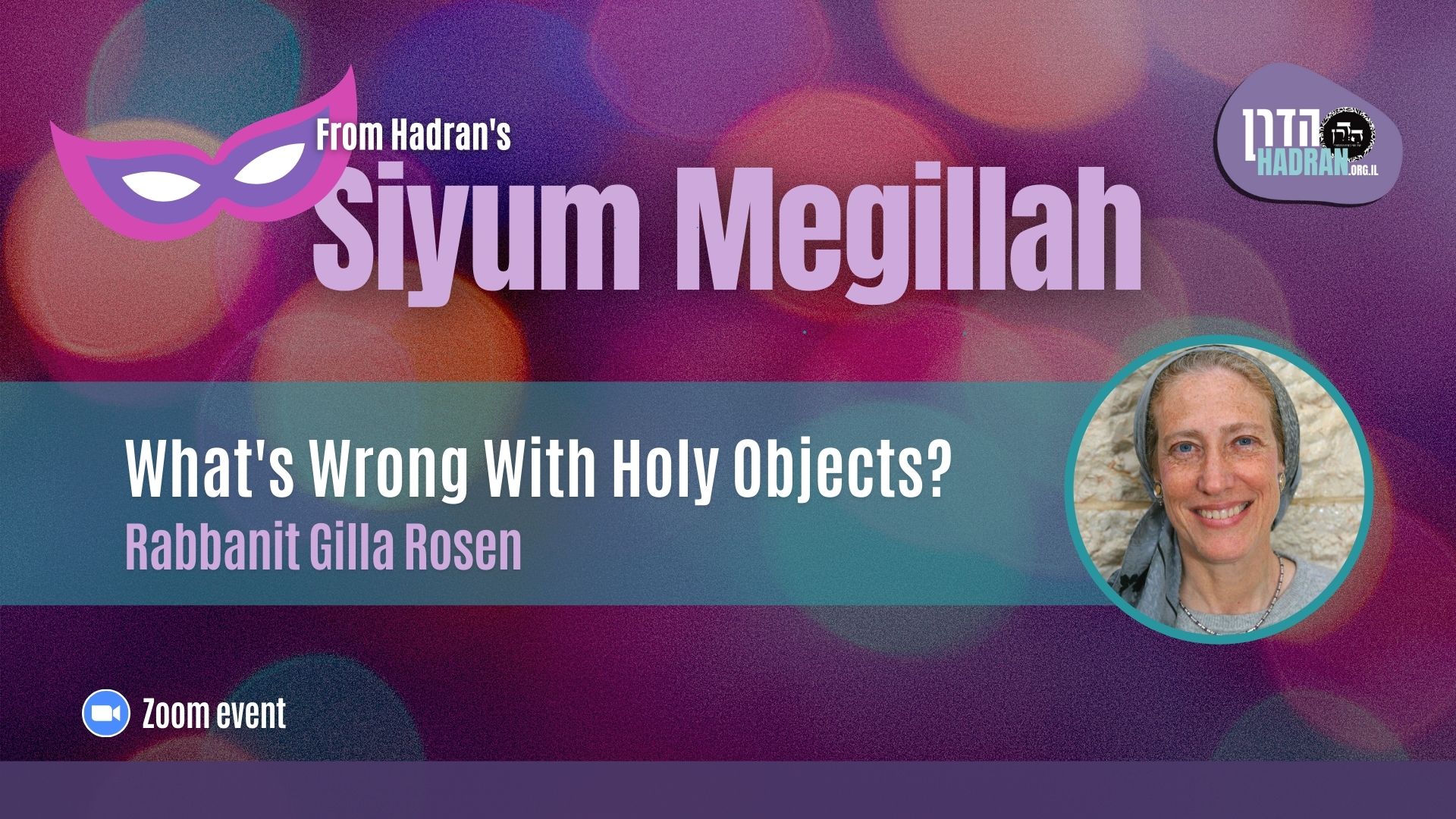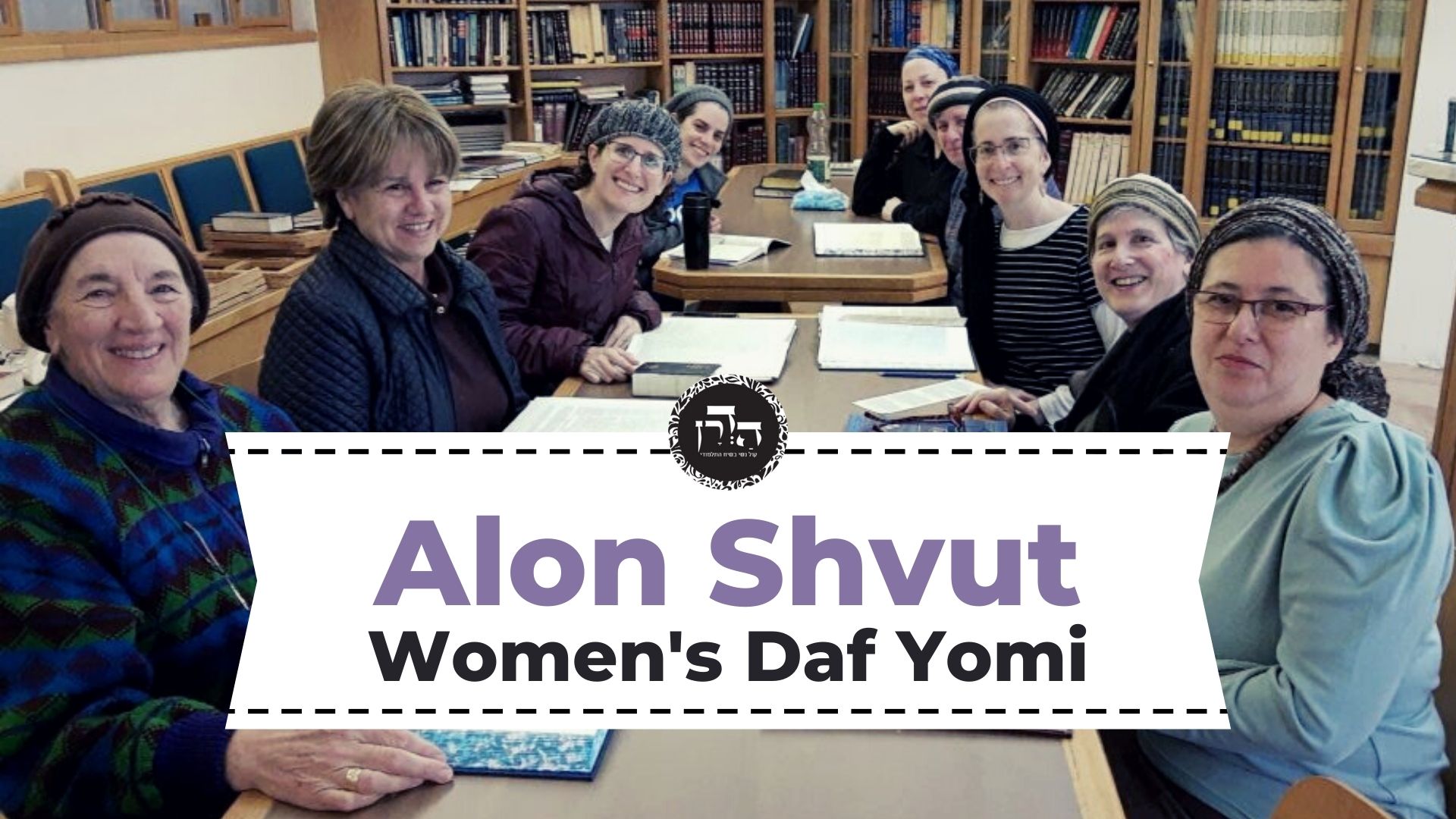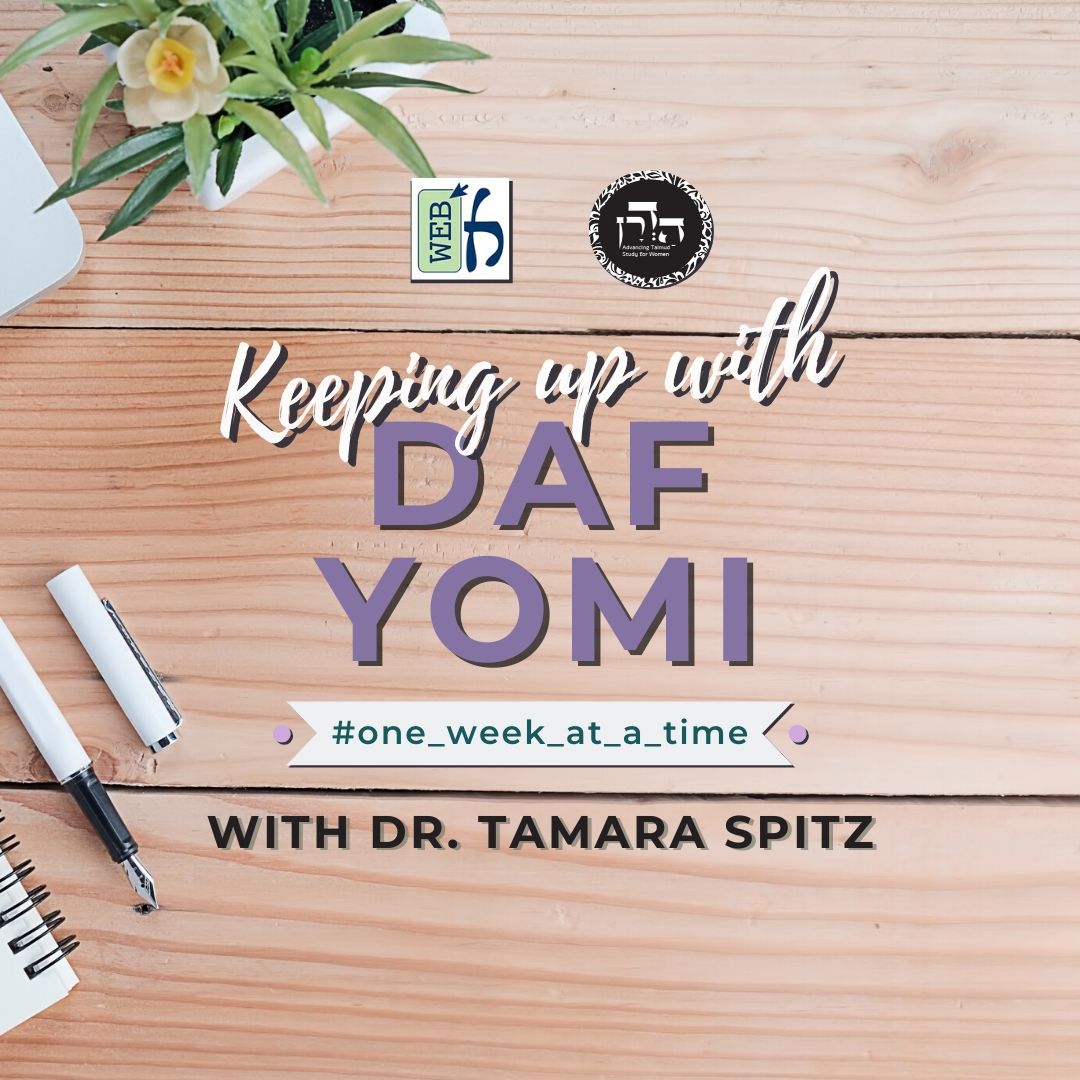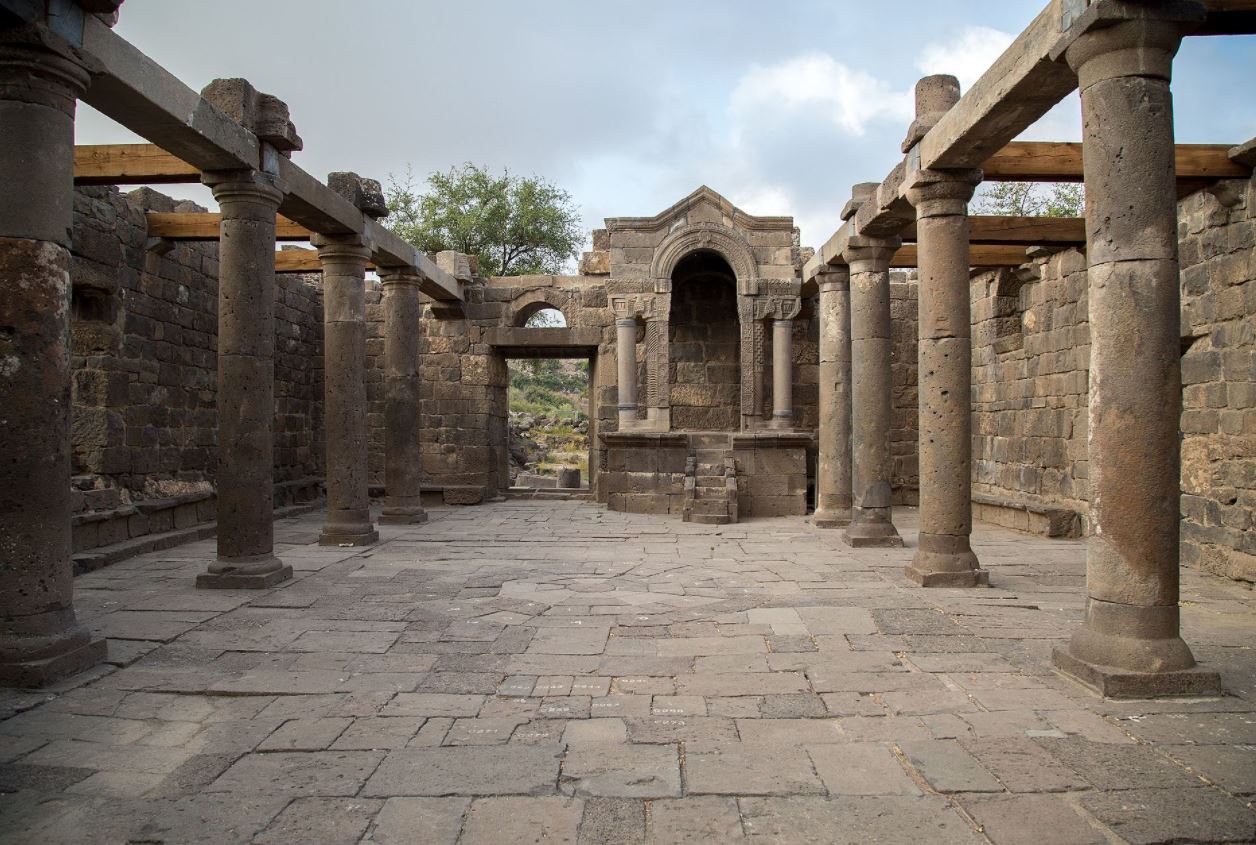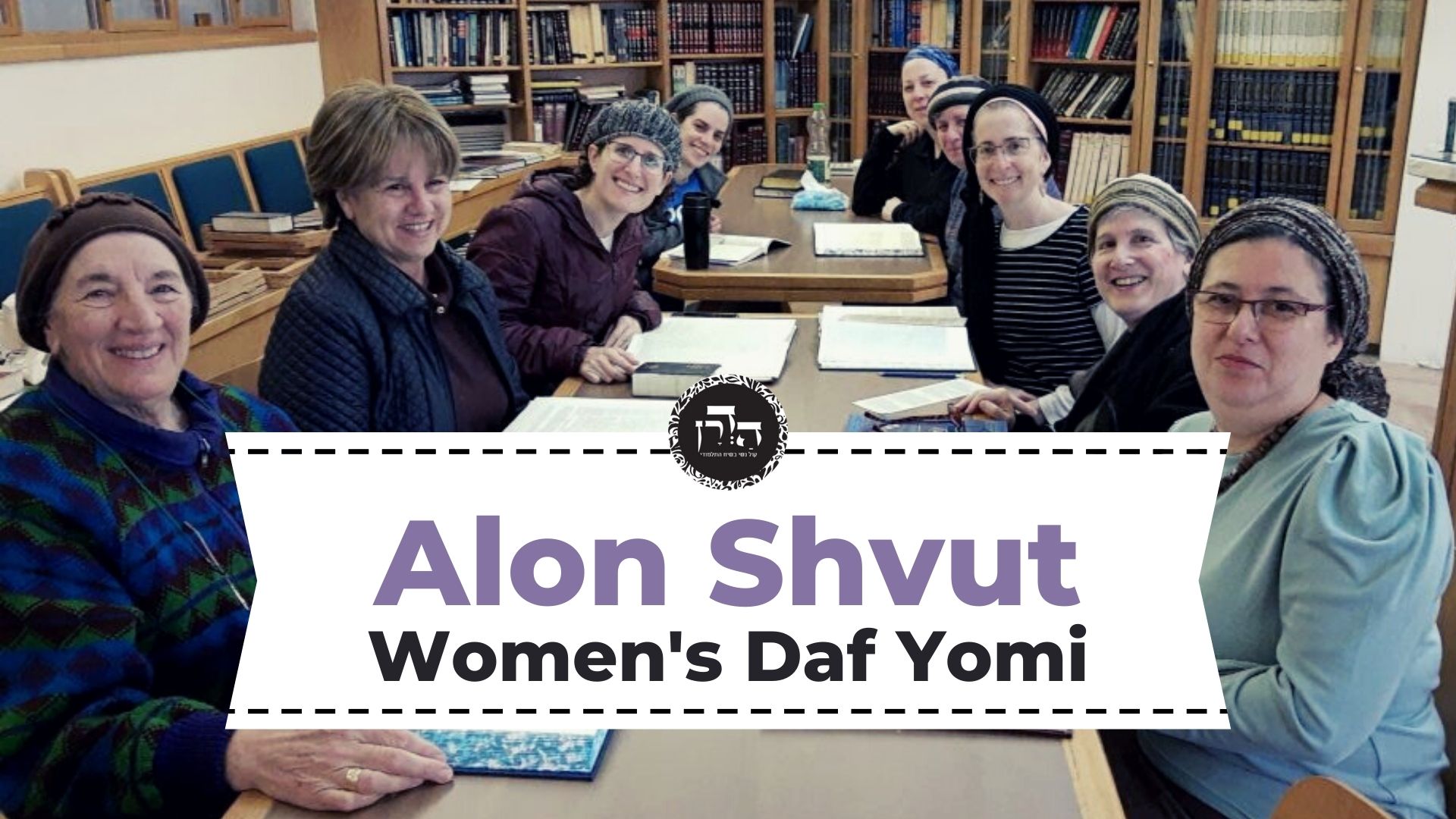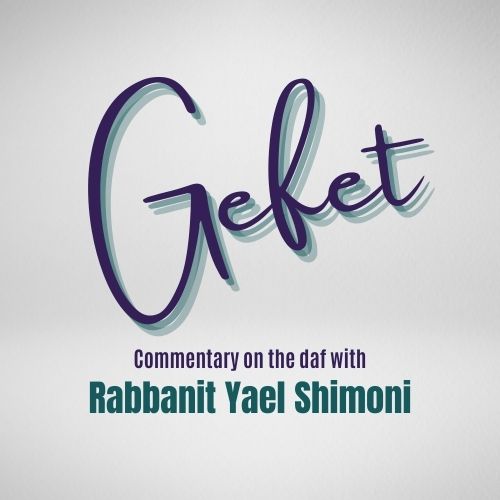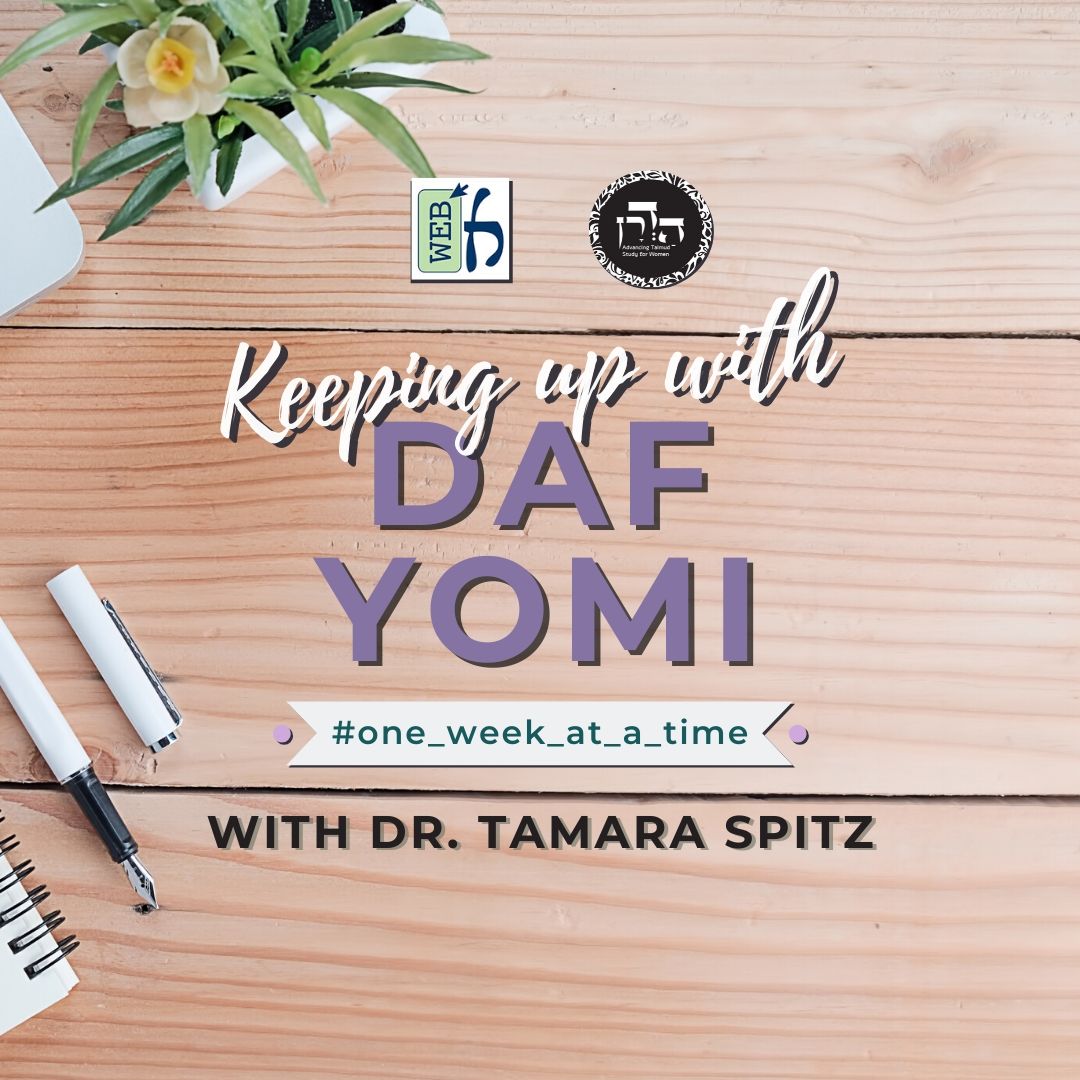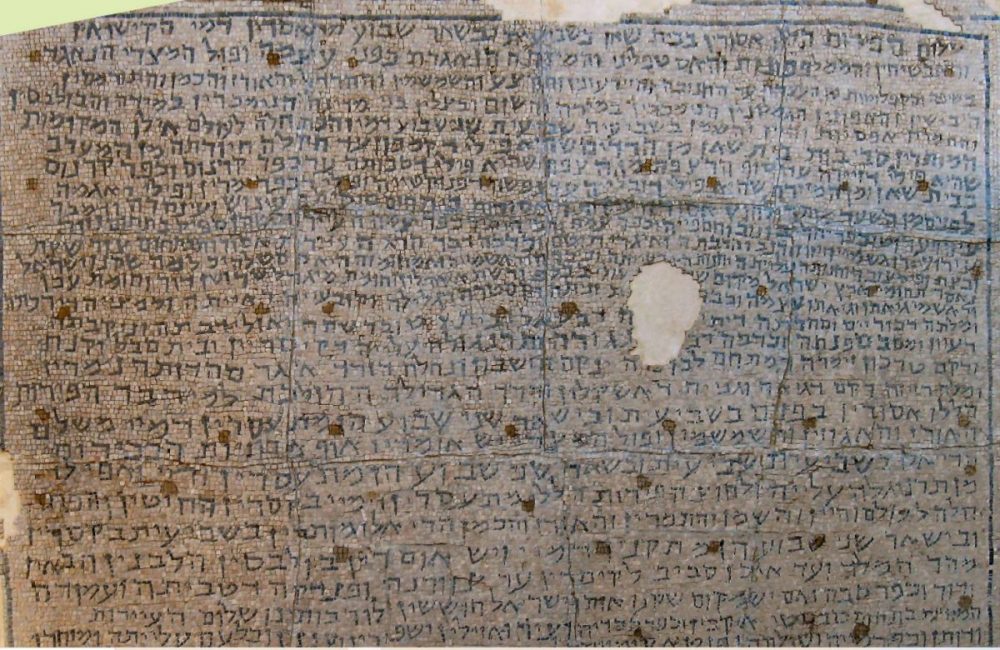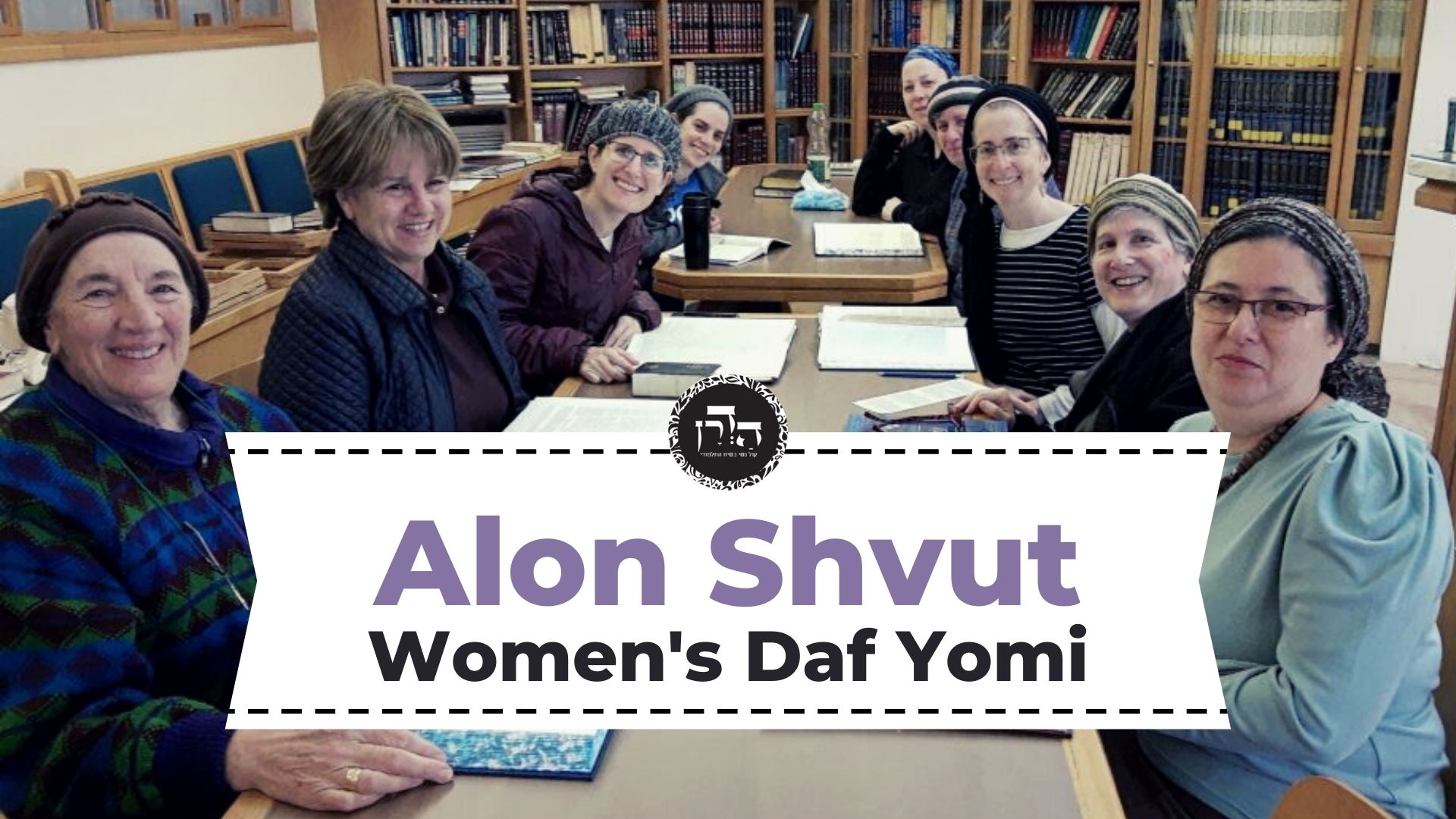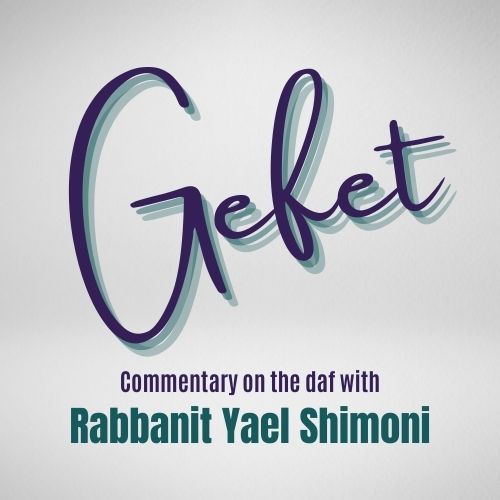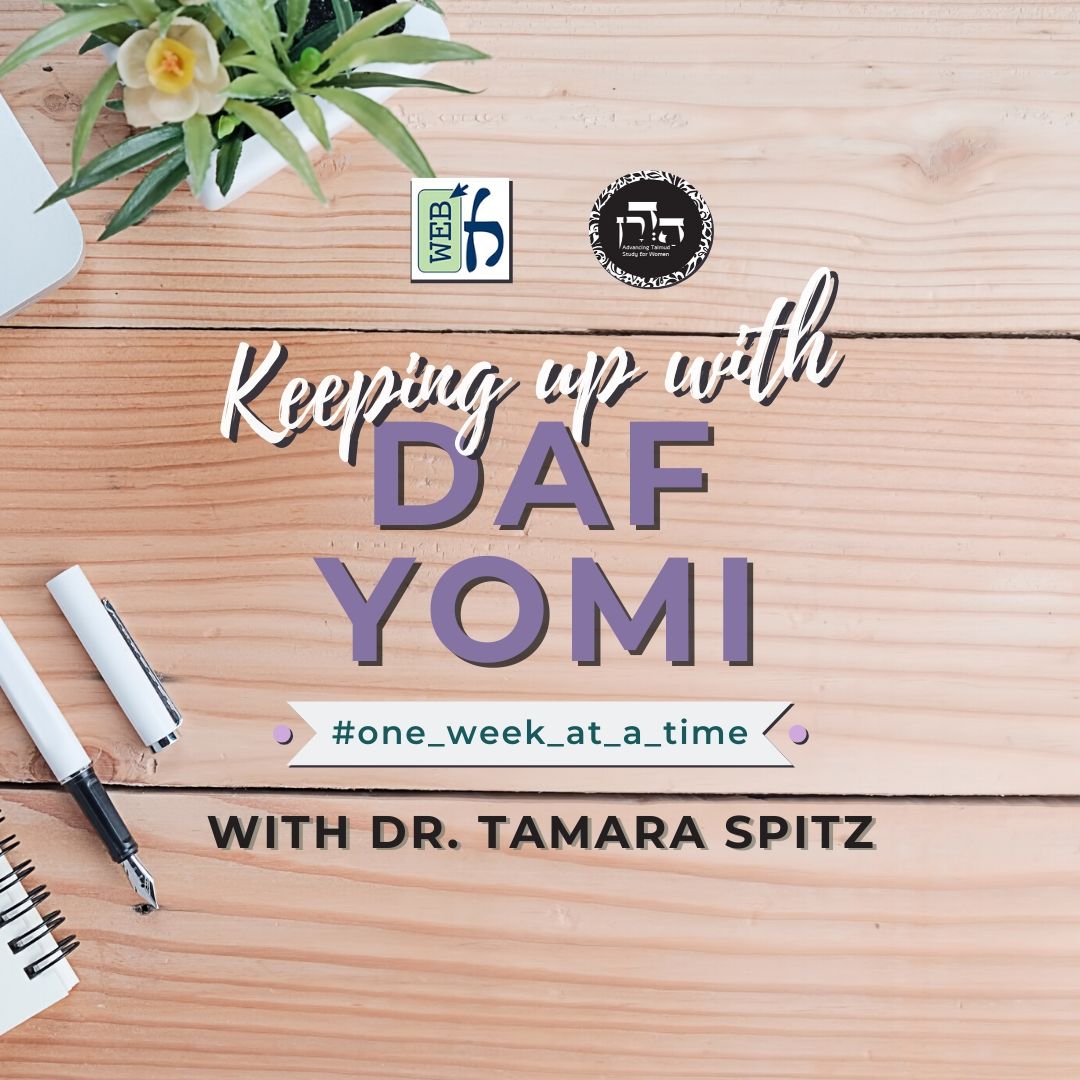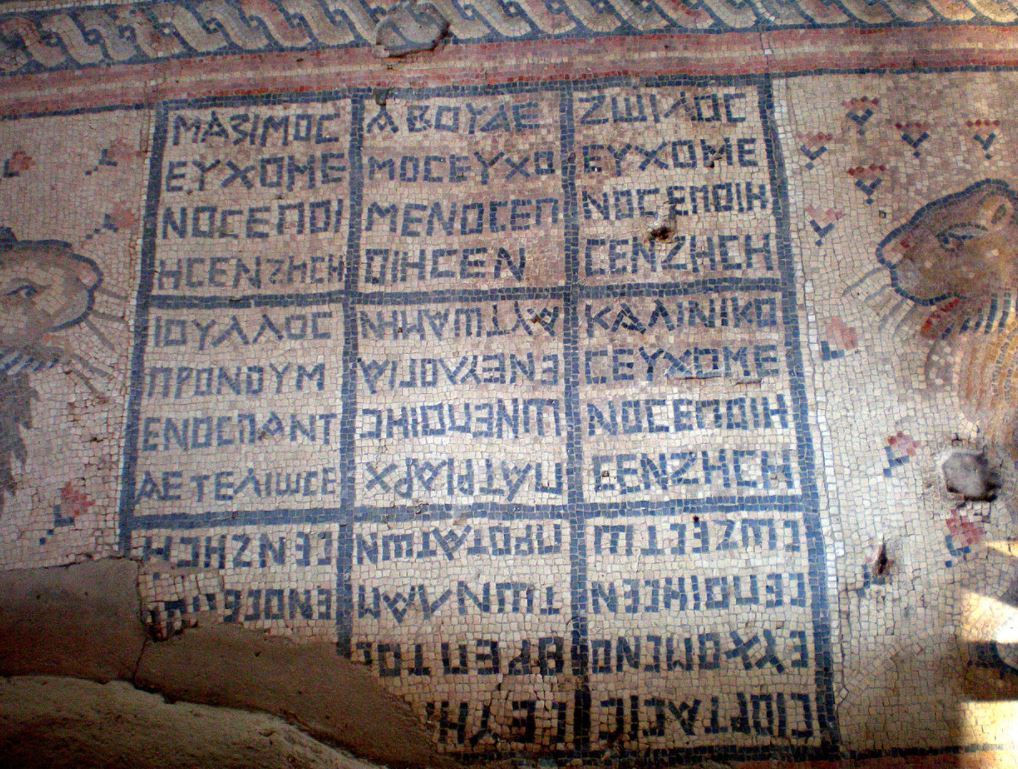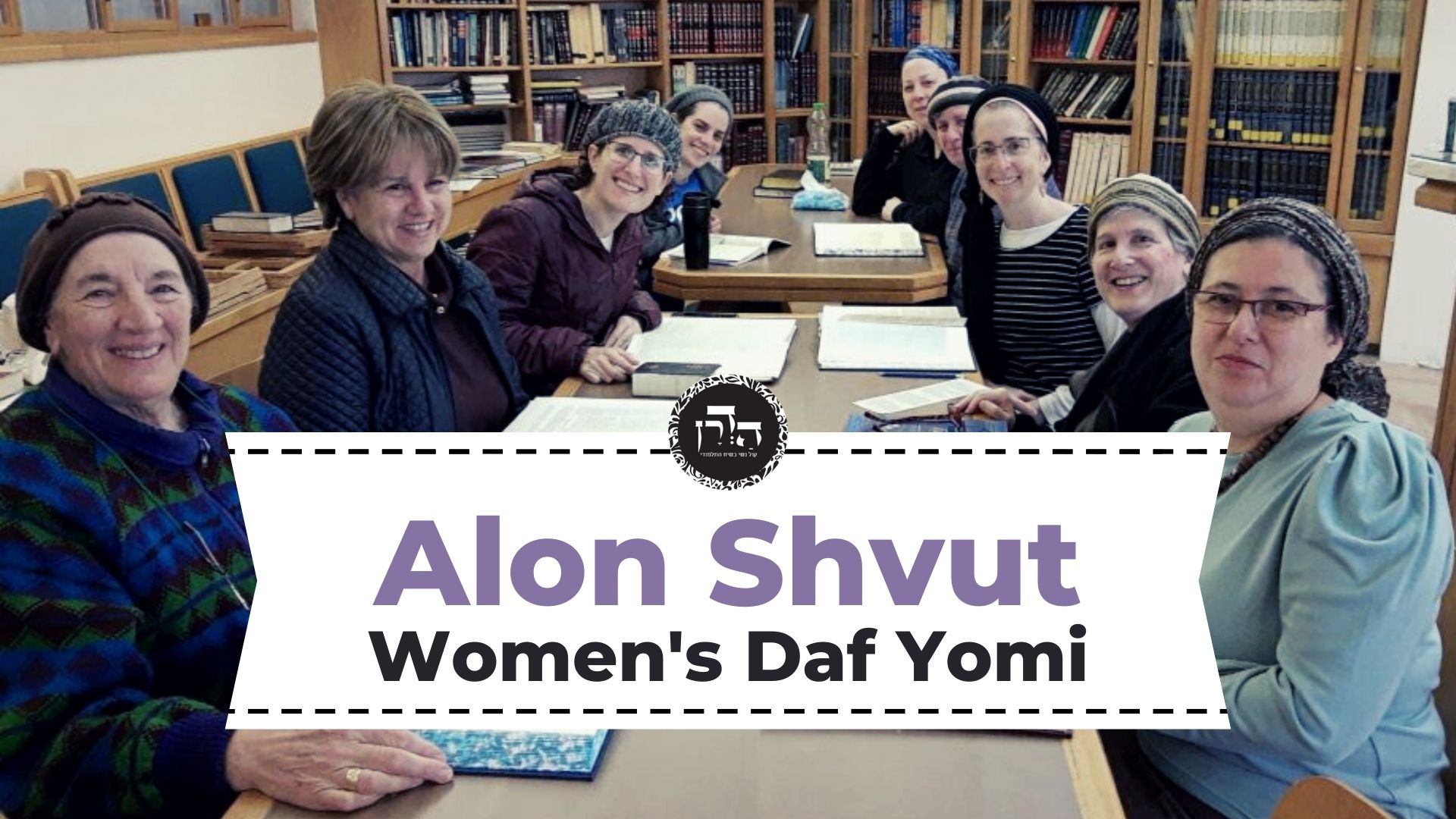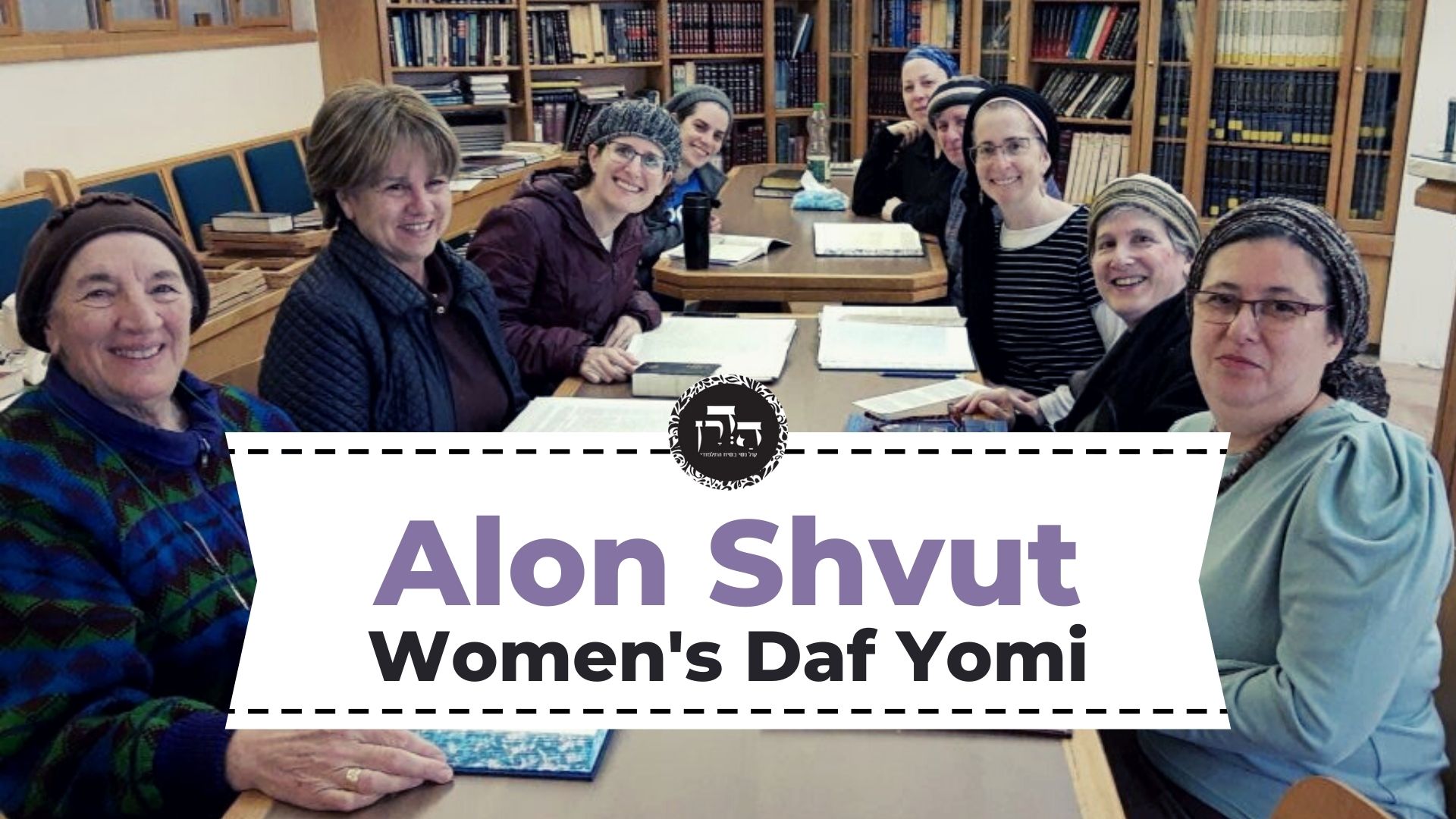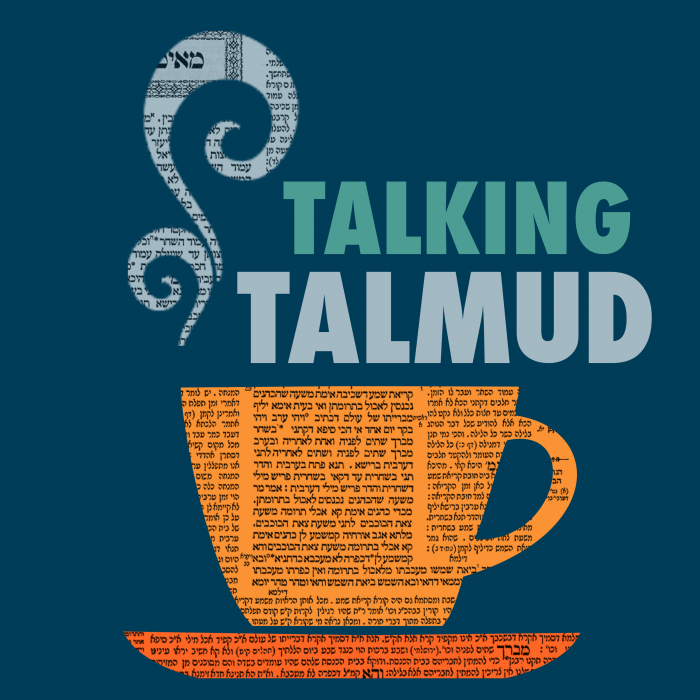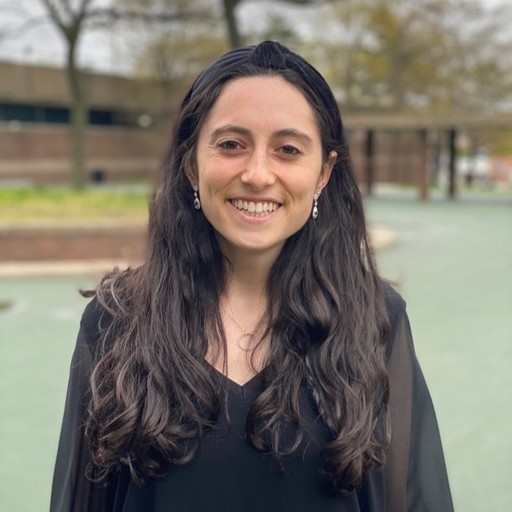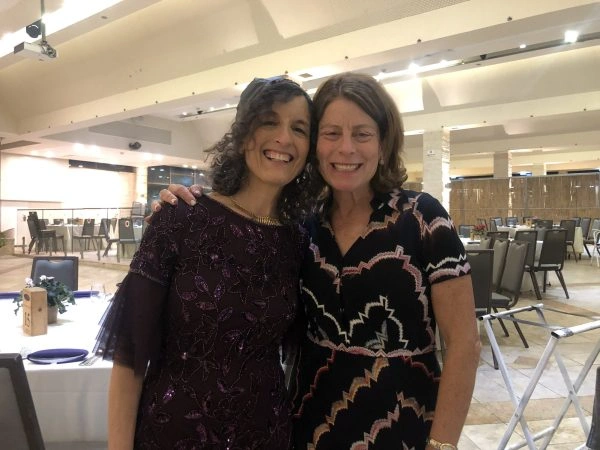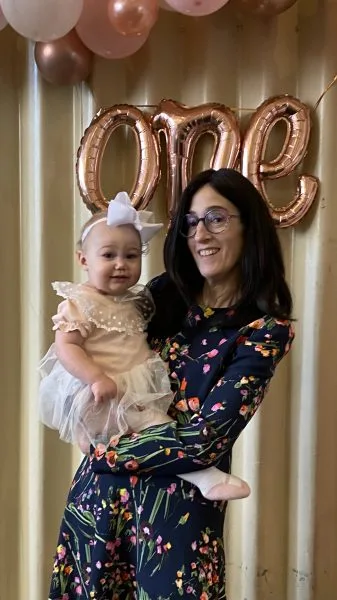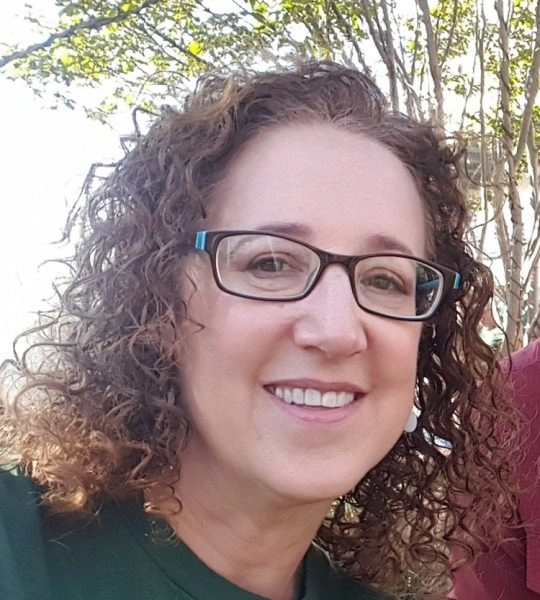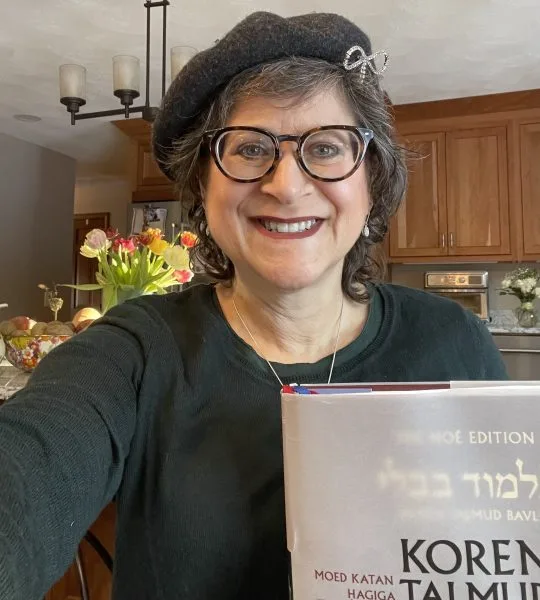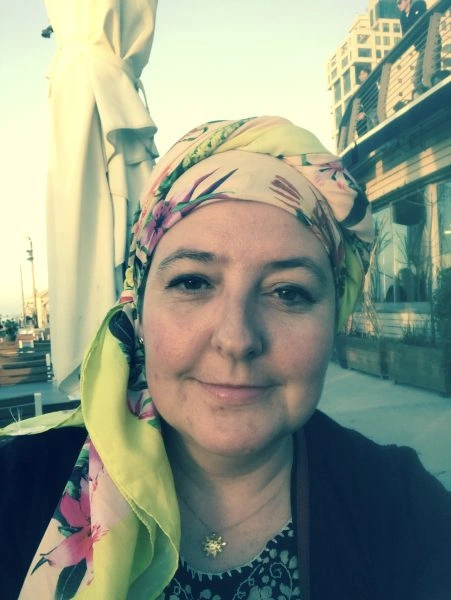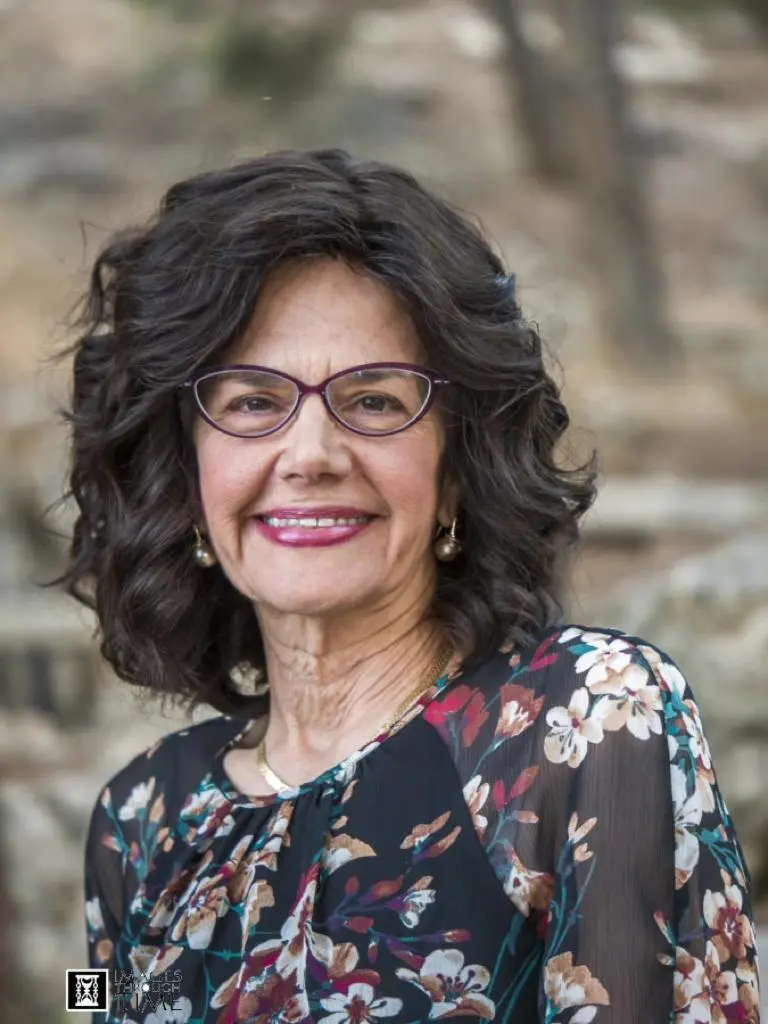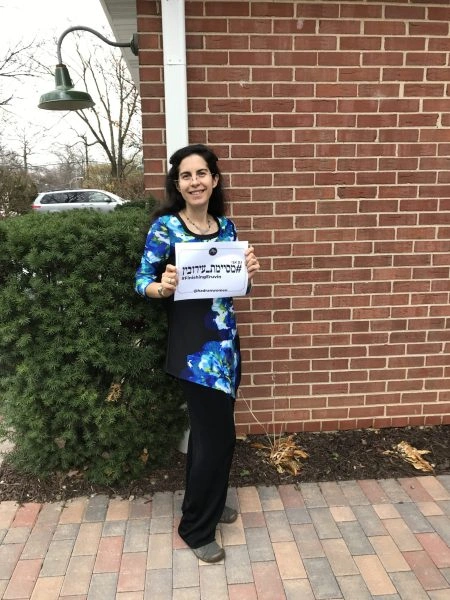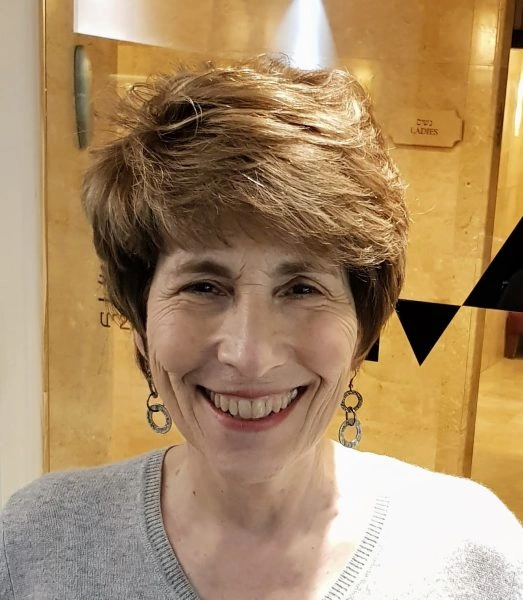Can holy books be written in any language? According to the Mishna they can be, however tefillin and mezuzot can only be written in Ashurit script. Rabban Shimon ben Gamliel says that holy books can only be written in Greek. The Gemara infers that all these things make one’s hands impure (according to a rabbinic decree) and all are sewn with animal sinews. A contradiction to our Mishna is brought from a braita that states that holy books must be written in Ashurit script as well. Five answers are brought to resolve the contradiction. Questions are raised against each of the answers. Rabbi Yehuda explains Rabban Shimon ben Gamliel’s opinion about Greek to be relating only to the Torah and because of the story of Ptolemy who took 72 elders and told them to translate the Torah into Greek. According to the story, each one of them was placed in a separate room and yet each of them translated in the exact same way. Regarding some verses, they each deliberately distorted certain passages in order to protect the integrity of the Jewish faith. From where can one derive from the Torah that it can be translated into Greek? A Kohen Gadol who is anointed with the special oil is different from one who was not anointed but became a Kohen Gadol by wearing the Kohen Gadol’s eight garments in that only he can bring a communal sin offering. A Kohen Gadol who is no longer a Kohen Gadol differs from a regular Kohen Gadol only in that he doesn’t perform the Yom Kippur service and doesn’t bring the daily mincha offering that the Kohen Gadol brings. Some disagree and say that even one who becomes a Kohen Gadol from wearing the garments can bring a communal sin offering. Rabbi Yosi disagrees with the end of the Mishna and holds that one who is no longer a Kohen Gadol can no longer work in The temple. What offerings could be brought on a small individual bama, a place meant for bringing sacrifices) and which ones could be brought on a large bama? Which were not able to be brought on a bama at all. What are the differences between the Tabernacle in Shilo and the Temple in Jerusalem?
Megillah 9
Share this shiur:
Megillah
Masechet Megilah is sponsored by Jordana and Kalman Schoor on behalf of their daughter Daria Esther who is completing Masechet Megilla in honor of her Bat Mitzva. Mazal tov!
Want to dedicate learning? Get started here:


Today’s daily daf tools:
Megillah
Masechet Megilah is sponsored by Jordana and Kalman Schoor on behalf of their daughter Daria Esther who is completing Masechet Megilla in honor of her Bat Mitzva. Mazal tov!
Today’s daily daf tools:
Delve Deeper
Broaden your understanding of the topics on this daf with classes and podcasts from top women Talmud scholars.
New to Talmud?
Check out our resources designed to help you navigate a page of Talmud – and study at the pace, level and style that fits you.
The Hadran Women’s Tapestry
Meet the diverse women learning Gemara at Hadran and hear their stories.
Megillah 9
כָּאן בְּגּוֹפָן שֶׁלָּנוּ, כָּאן בְּגּוֹפָן שֶׁלָּהֶן.
Here, the mishna is referring to Torah scrolls written in another language in our script, i.e., in Hebrew letters. There, the baraita is referring to Torah scrolls written in another language in their script, in the letters of another alphabet.
אֲמַר לֵיהּ אַבָּיֵי: בְּמַאי אוֹקֵימְתָּא לְהַהִיא? בְּגּוֹפָן שֶׁלָּהֶן, מַאי אִירְיָא מִקְרָא שֶׁכְּתָבוֹ תַּרְגּוּם וְתַרְגּוּם שֶׁכְּתָבוֹ מִקְרָא? אֲפִילּוּ מִקְרָא שֶׁכְּתָבוֹ מִקְרָא וְתַרְגּוּם שֶׁכְּתָבוֹ תַּרְגּוּם נָמֵי. דְּהָא קָתָנֵי: עַד שֶׁיִּכְתְּבֶנּוּ אַשּׁוּרִית עַל הַסֵּפֶר בִּדְיוֹ!
Abaye said to Rava: How did you establish that baraita, i.e., that it is referring to Torah scrolls written in another language in their script? If it is so, why did the baraita specifically teach that the legal status of a Hebrew verse in the Bible that one wrote in Aramaic translation, or a verse written in Aramaic translation that one wrote in the Hebrew of the Bible, is not that of sacred writings? The legal status of even a Hebrew verse in the Bible that one wrote in the Hebrew of the Bible and a verse written in Aramaic translation that one wrote in Aramaic translation are also not that of sacred writings, as it is taught at the end of the baraita: A Torah scroll renders the hands impure only if one writes it in Ashurit script, on a parchment scroll, and in ink.
אֶלָּא, לָא קַשְׁיָא: הָא רַבָּנַן, הָא רַבָּן שִׁמְעוֹן בֶּן גַּמְלִיאֵל.
Rather, the matter must be explained differently. This is not difficult. This ruling in the mishna is according to the Rabbis, who permit writing Torah scrolls in any language, and that ruling in the baraita is according to Rabban Shimon ben Gamliel.
אִי רַבָּן שִׁמְעוֹן בֶּן גַּמְלִיאֵל הָא אִיכָּא יְוָנִית! אֶלָּא, לָא קַשְׁיָא: כָּאן בִּסְפָרִים, כָּאן בִּתְפִלִּין וּמְזוּזוֹת.
The Gemara asks: If the baraita is according to Rabban Shimon ben Gamliel, in addition to Ashurit, isn’t there Greek in which the Torah may also be written? Rather, say this is not difficult. Here, the mishna is referring to Torah scrolls, which may be written in any language; there, the baraita is referring to phylacteries and mezuzot, which may be written only in Hebrew, using Hebrew script.
תְּפִלִּין וּמְזוּזוֹת מַאי טַעְמָא? מִשּׁוּם דִּכְתִיב בְּהוּ: ״וְהָיוּ״ — בַּהֲוָיָיתָן יְהוּ, מַאי תַּרְגּוּם שֶׁכְּתָבוֹ מִקְרָא אִיכָּא? בִּשְׁלָמָא תּוֹרָה — אִיכָּא ״יְגַר שָׂהֲדוּתָא״, אֶלָּא הָכָא מַאי תַּרְגּוּם אִיכָּא?
The Gemara asks: With regard to phylacteries and mezuzot, what is the reason that they must be written in Hebrew? The Gemara explains: It is because it is written with regard to them: “And these words shall be” (Deuteronomy 6:6), indicating that as they are so shall they be, without change. The Gemara raises a difficulty: If the baraita is referring to phylacteries and mezuzot, what Aramaic translation that one wrote in the Hebrew of the Bible is there? Granted, in the Torah there is a verse written in Aramaic translation: “Yegar sahaduta” (Genesis 31:47); however, here, in phylacteries and mezuzot, what verses in Aramaic translation are there that could be written in Hebrew?
אֶלָּא, לָא קַשְׁיָא: כָּאן בִּמְגִילָּה, כָּאן בִּסְפָרִים. מְגִילָּה מַאי טַעְמָא, דִּכְתִיב בַּהּ: ״כִּכְתָבָם וְכִלְשׁוֹנָם״. מַאי תַּרְגּוּם שֶׁכְּתָבוֹ מִקְרָא אִיכָּא?
Rather, say this is not difficult. Here, the baraita is referring to the Megilla, the Scroll of Esther, which must be written in Hebrew; there, the mishna is referring to Torah scrolls, which may be written in any language. The Gemara asks: What is the reason that the Megilla must be written in Hebrew? It is due to the fact that it is written with regard to the Megilla: “According to their writing, and according to their language” (Esther 8:9), without change. The Gemara asks: But if the baraita is referring to the Megilla, what Aramaic translation that one wrote in the Hebrew of the Bible is there? The entire Megilla is written in Hebrew.
אָמַר רַב פָּפָּא: ״וְנִשְׁמַע פִּתְגָם הַמֶּלֶךְ״. רַב נַחְמָן בַּר יִצְחָק אָמַר: ״וְכׇל הַנָּשִׁים יִתְּנוּ יְקָר לְבַעְלֵיהֶן״.
Rav Pappa said that it is written: “And when the king’s decree [pitgam] shall be publicized” (Esther 1:20), and that pitgam is essentially an Aramaic word. Rav Naḥman bar Yitzḥak said that it is written: “And all the wives will give honor [yekar] to their husbands” (Esther 1:20), and yekar is Aramaic for honor.
רַב אָשֵׁי אָמַר: כִּי תַּנְיָא הָהִיא בִּשְׁאָר סְפָרִים, וְרַבִּי יְהוּדָה הִיא. דְּתַנְיָא: תְּפִלִּין וּמְזוּזוֹת אֵין נִכְתָּבִין אֶלָּא אַשּׁוּרִית, וְרַבּוֹתֵינוּ הִתִּירוּ יְוָנִית.
Rav Ashi suggested a different explanation and said: When that baraita is taught it is taught with regard to the rest of the books of the Bible, other than the Torah. And it is in accordance with the opinion of Rabbi Yehuda, as it is taught in a baraita: Phylacteries and mezuzot are written only in Ashurit; and our Rabbis permitted writing them in Greek as well.
וְהָכְתִיב ״וְהָיוּ״! אֶלָּא אֵימָא: סְפָרִים נִכְתָּבִים בְּכׇל לָשׁוֹן, וְרַבּוֹתֵינוּ הִתִּירוּ יְוָנִית. הִתִּירוּ?! מִכְּלָל דְּתַנָּא קַמָּא אָסַר!
The Gemara asks: How did our Rabbis permit this? Isn’t it written with regard to phylacteries and mezuzot: “And these words shall be” (Deuteronomy 6:6), indicating that their language may not be changed. Rather, say that this is what the baraita is saying: Torah scrolls are written in any language; and our Rabbis permitted writing them in Greek as well. Once again the Gemara asks: Our Rabbis permitted? By inference, apparently the first tanna prohibits writing a Torah scroll in Greek. However, he explicitly permits writing a Torah scroll in any language.
אֶלָּא אֵימָא: רַבּוֹתֵינוּ לֹא הִתִּירוּ שֶׁיִּכָּתְבוּ אֶלָּא יְוָנִית. וְתַנְיָא אָמַר רַבִּי יְהוּדָה: אַף כְּשֶׁהִתִּירוּ רַבּוֹתֵינוּ יְוָנִית — לֹא הִתִּירוּ אֶלָּא בְּסֵפֶר תּוֹרָה,
Rather, say in explanation of the baraita: And our Rabbis permitted them to be written only in Greek. And it is taught in another baraita that Rabbi Yehuda said: Even when our Rabbis permitted Greek, they permitted it only in a Torah scroll, and not for other books of the Bible, which must be written only in Hebrew.
וּמִשּׁוּם מַעֲשֶׂה דְּתַלְמַי הַמֶּלֶךְ. דְּתַנְיָא: מַעֲשֶׂה בְּתַלְמַי הַמֶּלֶךְ שֶׁכִּינֵּס שִׁבְעִים וּשְׁנַיִם זְקֵנִים וְהִכְנִיסָן בְּשִׁבְעִים וּשְׁנַיִם בָּתִּים וְלֹא גִּילָּה לָהֶם עַל מָה כִּינְסָן. וְנִכְנַס אֵצֶל כׇּל אֶחָד וְאֶחָד, וְאָמַר לָהֶם: כִּתְבוּ לִי תּוֹרַת מֹשֶׁה רַבְּכֶם. נָתַן הַקָּדוֹשׁ בָּרוּךְ הוּא בְּלֵב כׇּל אֶחָד וְאֶחָד עֵצָה וְהִסְכִּימוּ כּוּלָּן לְדַעַת אַחַת.
The Gemara continues: And this was due to the incident of King Ptolemy, as it is taught in a baraita: There was an incident involving King Ptolemy of Egypt, who assembled seventy-two Elders from the Sages of Israel, and put them into seventy-two separate rooms, and did not reveal to them for what purpose he assembled them, so that they would not coordinate their responses. He entered and approached each and every one, and said to each of them: Write for me a translation of the Torah of Moses your teacher. The Holy One, Blessed be He, placed wisdom in the heart of each and every one, and they all agreed to one common understanding. Not only did they all translate the text correctly, they all introduced the same changes into the translated text.
וְכָתְבוּ לוֹ: ״אֱלֹהִים בָּרָא בְּרֵאשִׁית״. ״אֶעֱשֶׂה אָדָם בְּצֶלֶם וּבִדְמוּת״.
And they wrote for him: God created in the beginning [bereshit], reversing the order of the words in the first phrase in the Torah that could be misinterpreted as: “Bereshit created God” (Genesis 1:1). They did so to negate those who believe in the preexistence of the world and those who maintain that there are two powers in the world: One is Bereshit, who created the second, God. And they wrote: I shall make man in image and in likeness, rather than: “Let us make man in our image and in our likeness” (Genesis 1:26), as from there too one could mistakenly conclude that there are multiple powers and that God has human form.
״וַיְכַל בְּיוֹם הַשִּׁשִּׁי וַיִּשְׁבּוֹת בְּיוֹם הַשְּׁבִיעִי״. ״זָכָר וּנְקֵבָה בְּרָאוֹ״, וְלֹא כָּתְבוּ ״בְּרָאָם״.
Instead of: “And on the seventh day God concluded His work” (Genesis 2:2), which could have been understood as though some of His work was completed on Shabbat itself, they wrote: And on the sixth day He concluded His work, and He rested on the seventh day. They also wrote: Male and female He created him, and they did not write as it is written in the Torah: “Male and female He created them” (Genesis 5:2), to avoid the impression that there is a contradiction between this verse and the verse: “And God created man” (Genesis 1:27), which indicates that God created one person.
״הָבָה אֵרְדָה וְאָבְלָה שָׁם שְׂפָתָם״. ״וַתִּצְחַק שָׂרָה בִּקְרוֹבֶיהָ״.
Instead of: “Come, let us go down, and there confound their language” (Genesis 11:7), which indicates multiple authorities, they wrote in the singular: Come, let me go down, and there confound their language. In addition, they replaced the verse: “And Sarah laughed within herself [bekirba]” (Genesis 18:12), with: And Sarah laughed among her relatives [bikroveha]. They made this change to distinguish between Sarah’s laughter, which God criticized, and Abraham’s laughter, to which no reaction is recorded. Based on the change, Sarah’s laughter was offensive because she voiced it to others.
״כִּי בְאַפָּם הָרְגוּ שׁוֹר וּבִרְצוֹנָם עִקְּרוּ אֵבוּס״. ״וַיִּקַּח מֹשֶׁה אֶת אִשְׁתּוֹ וְאֶת בָּנָיו וַיַּרְכִּיבֵם עַל נוֹשֵׂא בְּנֵי אָדָם״.
They also altered the verse: “For in their anger they slew a man and in their self-will they slaughtered an ox” (Genesis 49:6), to read: For in their anger they slew an ox and in their self-will they uprooted a trough, to avoid the charge that Jacob’s sons were murderers. Instead of: “And Moses took his wife and his sons, and set them upon a donkey” (Exodus 4:20), they wrote: And Moses took his wife and his sons, and set them upon a carrier of people, which could be understood as referring to a horse or a camel rather than the lowly donkey.
״וּמוֹשַׁב בְּנֵי יִשְׂרָאֵל אֲשֶׁר יָשְׁבוּ בְּמִצְרָיִם וּבִשְׁאָר אֲרָצוֹת אַרְבַּע מֵאוֹת שָׁנָה״. ״וַיִּשְׁלַח אֶת זַאֲטוּטֵי בְּנֵי יִשְׂרָאֵל״. ״וְאֶל זַאֲטוּטֵי בְּנֵי יִשְׂרָאֵל לֹא שָׁלַח יָדוֹ״.
Instead of: “And the residence of the children of Israel, who resided in Egypt, was four hundred and thirty years” (Exodus 12:40), which when read literally is imprecise, for they did not dwell in Egypt that long, they wrote: And the residence of the children of Israel, who resided in Egypt and in other lands, was four hundred years. Instead of: “And he sent the youth of the children of Israel, who brought burnt-offerings” (Exodus 24:5), which evokes the question of why young men were sent to perform that service, they wrote: And he sent the elect [za’atutei] of the children of Israel. The same term was substituted again several verses later, rendering the verse: “And upon the nobles of the children of Israel He laid not His hand” (Exodus 24:11), as: And upon the elect of the children of Israel He laid not His hand.
״לֹא חֶמֶד אֶחָד מֵהֶם נָשָׂאתִי״. ״אֲשֶׁר חָלַק ה׳ אֱלֹהֶיךָ אֹתָם לְהָאִיר לְכׇל הָעַמִּים״.
Instead of Moses’ assertion: “I have not taken one donkey [ḥamor] from them” (Numbers 16:15), they wrote in more general terms: “I have not taken one item of value [ḥemed] from them,” to prevent the impression that Moses took other items. To the verse that discusses the worship of the sun and the moon, about which it is written: “Which the Lord your God has allotted to all the nations” (Deuteronomy 4:19), they added a word to make it read: “Which the Lord your God has allotted to give light to all the nations,” to prevent the potential misinterpretation that the heavenly bodies were given to the gentiles so that they may worship them.
״וַיֵּלֶךְ וַיַּעֲבוֹד אֱלֹהִים אֲחֵרִים אֲשֶׁר לֹא צִוִּיתִי לְעוֹבְדָם״.
The verse: “And has gone and served other gods, and worshipped them, either the sun, or the moon, or any of the host of heaven, which I have not commanded” (Deuteronomy 17:3), could be understood as indicating that God did not command their existence, i.e., these entities created themselves. Therefore, when these Elders translated the verse they added a word to the end of the verse to make it read: Which I have not commanded to serve them.
וְכָתְבוּ לוֹ: ״אֶת צְעִירַת הָרַגְלַיִם״, וְלֹא כָּתְבוּ לוֹ ״אֶת הָאַרְנֶבֶת״, מִפְּנֵי שֶׁאִשְׁתּוֹ שֶׁל תַּלְמַי אַרְנֶבֶת שְׁמָהּ, שֶׁלֹּא יֹאמַר שָׂחֲקוּ בִּי הַיְּהוּדִים וְהֵטִילוּ שֵׁם אִשְׁתִּי בַּתּוֹרָה.
And in the list of unclean animals they wrote for him: The short-legged beast [tze’irat haraglayim]. And they did not write for him: “And the hare [arnevet]” (Leviticus 11:6), since the name of Ptolemy’s wife was Arnevet, so that he would not say: The Jews have mocked me and inserted my wife’s name in the Torah. Therefore, they did not refer to the hare by name, but by one of its characteristic features.
רַבָּן שִׁמְעוֹן בֶּן גַּמְלִיאֵל אוֹמֵר: אַף בַּסְּפָרִים לֹא הִתִּירוּ שֶׁיִּכָּתְבוּ אֶלָּא יְוָנִית. אָמַר רַבִּי אֲבָהוּ אָמַר רַבִּי יוֹחָנָן: הֲלָכָה כְּרַבָּן שִׁמְעוֹן בֶּן גַּמְלִיאֵל. וְאָמַר רַבִּי יוֹחָנָן: מַאי טַעְמָא דְּרַבָּן שִׁמְעוֹן בֶּן גַּמְלִיאֵל, אָמַר קְרָא: ״יַפְתְּ אֱלֹהִים לְיֶפֶת וְיִשְׁכֹּן בְּאׇהֳלֵי שֵׁם״, דְּבָרָיו שֶׁל יֶפֶת יִהְיוּ בְּאׇהֳלֵי שֵׁם.
The mishna cites that Rabban Shimon ben Gamliel says: Even with regard to Torah scrolls, the Sages permitted them to be written only in Greek. Rabbi Abbahu said that Rabbi Yoḥanan said: The halakha is in accordance with the opinion of Rabban Shimon ben Gamliel. And Rabbi Yoḥanan said: What is the reason for the opinion of Rabban Shimon ben Gamliel? He based his opinion on an allusion in the Torah, as the verse states: “God shall enlarge Japheth, and He shall dwell in the tents of Shem” (Genesis 9:27), indicating that the words of Japheth shall be in the tents of Shem. The language of Javan, who is the forbear of the Greek nation and one of the descendants of Japheth, will also serve as a sacred language in the tents of Shem, where Torah is studied.
וְאֵימָא גּוֹמֶר וּמָגוֹג? אָמַר רַבִּי חִיָּיא בַּר אַבָּא: הַיְינוּ טַעְמָא, דִּכְתִיב: ״יַפְתְּ אֱלֹהִים לְיֶפֶת״, יַפְיוּתוֹ שֶׁל יֶפֶת יְהֵא בְּאׇהֳלֵי שֵׁם.
The Gemara asks: And say that it is the languages of Gomer and Magog that serve as sacred languages, as they too were descendants of Japheth (see Genesis 10:2). The Gemara answers that Rabbi Ḥiyya bar Abba said: This is the reason, as it is written: “God shall enlarge [yaft] Japheth [Yefet].” Yaft is etymologically similar to the Hebrew term for beauty [yofi]. The verse teaches that the beauty of Japheth shall be in the tents of Shem, and Greek is the most beautiful of the languages of the descendants of Japheth.
מַתְנִי׳ אֵין בֵּין כֹּהֵן מָשׁוּחַ בְּשֶׁמֶן הַמִּשְׁחָה לִמְרוּבֵּה בְגָדִים אֶלָּא פַּר הַבָּא עַל כׇּל הַמִּצְוֹת.
MISHNA: The difference between a High Priest anointed with the oil of anointing, which was the method through which High Priests were consecrated until the oil was sequestered toward the end of the First Temple period, and one consecrated by donning multiple garments unique to the High Priest, which was the practice during the Second Temple period, is only that the latter does not bring the bull that comes for transgression of any of the mitzvot. An anointed High Priest who unwittingly issued an erroneous halakhic ruling and acted upon that ruling, and transgressed a mitzva whose unwitting violation renders one liable to bring a sin-offering, is obligated to bring a sin-offering unique to one in his position.
אֵין בֵּין כֹּהֵן מְשַׁמֵּשׁ לְכֹהֵן שֶׁעָבַר אֶלָּא פַּר יוֹם הַכִּפּוּרִים וַעֲשִׂירִית הָאֵיפָה.
The difference between a High Priest currently serving in that capacity and a former High Priest, who temporarily filled that position when the High Priest was unfit for service, is only with regard to the bull brought by the High Priest on Yom Kippur, and the tenth of an ephah meal-offering brought daily by the High Priest. Each of these offerings is brought only by the current High Priest, and not by a former High Priest.
גְּמָ׳ הָא לְעִנְיַן פַּר יוֹם כִּפּוּרִים וַעֲשִׂירִית הָאֵיפָה — זֶה וָזֶה שָׁוִין.
GEMARA: The Gemara infers that with regard to the matter of the bull brought by the High Priest on Yom Kippur, and with regard to the tenth of an ephah meal-offering, both this, the anointed High Priest, and that, the High Priest consecrated by donning multiple garments, are equal.
מַתְנִיתִין דְּלָא כְּרַבִּי מֵאִיר, דְּאִי רַבִּי מֵאִיר, [הָא תַּנְיָא]: מְרוּבֵּה בְגָדִים מֵבִיא פַּר הַבָּא עַל כׇּל הַמִּצְוֹת, דִּבְרֵי רַבִּי מֵאִיר, וַחֲכָמִים אוֹמְרִים: אֵינוֹ מֵבִיא.
The Gemara comments: The mishna is not in accordance with the opinion of Rabbi Meir, as if it were in accordance with the opinion of Rabbi Meir, it would be difficult. Isn’t it taught in a baraita: A High Priest consecrated by donning the multiple garments unique to the High Priest brings the bull brought for the unwitting violation of any of the mitzvot; this is the statement of Rabbi Meir. And the Rabbis say: He does not bring that offering.
מַאי טַעְמֵיהּ דְּרַבִּי מֵאִיר — דְּתַנְיָא: ״מָשִׁיחַ״, אֵין לִי אֶלָּא מָשׁוּחַ בְּשֶׁמֶן הַמִּשְׁחָה, מְרוּבֵּה בְגָדִים מִנַּיִן? תַּלְמוּד לוֹמַר: ״הַמָּשִׁיחַ״.
The Gemara asks: What is the reason for the opinion of Rabbi Meir? It is as it is taught in a baraita that it is written: “If the anointed priest shall sin” (Leviticus 4:3). From the word anointed, I have derived only that this halakha applies to a High Priest who was actually anointed with the oil of anointing. From where do I derive that even a High Priest consecrated by donning the multiple garments is also included in this halakha? The verse states: “The anointed,” with the definite article, indicating that the halakha applies to every High Priest.
בְּמַאי אוֹקֵימְנָא — דְּלָא כְּרַבִּי מֵאִיר. אֵימָא סֵיפָא: אֵין בֵּין כֹּהֵן מְשַׁמֵּשׁ לְכֹהֵן שֶׁעָבַר אֶלָּא פַּר יוֹם הַכִּפּוּרִים וַעֲשִׂירִית הָאֵיפָה. הָא לְכׇל דִּבְרֵיהֶן — זֶה וָזֶה שָׁוִין, אֲתָאן לְרַבִּי מֵאִיר, דְּתַנְיָא: אֵירַע בּוֹ פְּסוּל וּמִינּוּ כֹּהֵן אַחֵר תַּחְתָּיו, רִאשׁוֹן — חוֹזֵר לַעֲבוֹדָתוֹ, שֵׁנִי — כׇּל מִצְוֹת כְּהוּנָּה גְּדוֹלָה עָלָיו, דִּבְרֵי רַבִּי מֵאִיר. רַבִּי יוֹסֵי אוֹמֵר: רִאשׁוֹן — חוֹזֵר לַעֲבוֹדָתוֹ, שֵׁנִי — אֵינוֹ רָאוּי לֹא לְכֹהֵן גָּדוֹל וְלֹא לְכֹהֵן הֶדְיוֹט.
The Gemara asks: How did we establish the mishna? We established that it is not in accordance with the opinion of Rabbi Meir. Say the latter clause of the mishna: The difference between a High Priest currently serving in that capacity and a former High Priest is only with regard to the bull brought on Yom Kippur, and the tenth of an ephah meal-offering. The Gemara infers that with regard to all other matters, both this, a High Priest currently serving, and that, a former High Priest, are equal. If so we have arrived at the opinion of Rabbi Meir, as it is taught in a baraita: If temporary disqualification befell the High Priest, and they appointed another priest in his stead, then after the cause of disqualification of the first priest passes, he returns to his service as High Priest. With regard to the second priest, all of the mitzvot of the High Priest are incumbent upon him; this is the statement of Rabbi Meir. Rabbi Yosei says: The first returns to his service; the second is fit to serve neither as a High Priest nor as a common priest.
וְאָמַר רַבִּי יוֹסֵי: מַעֲשֶׂה בְּרַבִּי יוֹסֵף בֶּן אִלֵּם מִצִּיפּוֹרִי שֶׁאֵירַע בּוֹ פְּסוּל בְּכֹהֵן גָּדוֹל וּמִינּוּהוּ תַּחְתָּיו, וּבָא מַעֲשֶׂה לִפְנֵי חֲכָמִים, וְאָמְרוּ: רִאשׁוֹן — חוֹזֵר לַעֲבוֹדָתוֹ, שֵׁנִי — אֵינוֹ רָאוּי לֹא לְכֹהֵן גָּדוֹל וְלֹא לְכֹהֵן הֶדְיוֹט.
And Rabbi Yosei said: There was an incident involving the priest Rabbi Yosef ben Elem of Tzippori, who, when disqualification befell a High Priest, the priests appointed him in his stead. And after the cause of the disqualification was resolved, the incident came before the Sages for a ruling with regard to the status of Rabbi Yosef ben Elem. And the Sages said: The original High Priest returns to his service, while the second is fit to serve neither as High Priest nor as a common priest.
כֹּהֵן גָּדוֹל — מִשּׁוּם אֵיבָה, כֹּהֵן הֶדְיוֹט — מִשּׁוּם מַעֲלִין בַּקּוֹדֶשׁ וְלֹא מוֹרִידִין. רֵישָׁא רַבָּנַן, וְסֵיפָא רַבִּי מֵאִיר!
The Gemara explains: Neither as a High Priest, due to hatred, jealousy, and bitterness that would arise if there were two High Priests with equal standing in the Temple; nor as a common priest, because the principle is: One elevates to a higher level in matters of sanctity and one does not downgrade. Once he has served as a High Priest he cannot be restored to the position of a common priest. Is that to say that the first clause of the mishna is in accordance with the opinion of the Rabbis, who disagree with Rabbi Meir, and the latter clause is in accordance with the opinion of Rabbi Meir?
אָמַר רַב חִסְדָּא, אִין: רֵישָׁא רַבָּנַן וְסֵיפָא רַבִּי מֵאִיר. רַב יוֹסֵף אָמַר: רַבִּי הִיא, וְנָסֵיב לַהּ אַלִּיבָּא דְתַנָּאֵי.
Rav Ḥisda said: Indeed, the first clause of the mishna is in accordance with the opinion of the Rabbis, and the latter clause is in accordance with the opinion of Rabbi Meir. Rav Yosef said: The entire mishna is according to Rabbi Yehuda HaNasi, and he formulates it according to the opinions of different tanna’im, that is to say, resulting in a third opinion, in accordance with the opinion of the Rabbis with regard to a High Priest consecrated by donning multiple garments, and the opinion of Rabbi Meir with regard to a former High Priest.
מַתְנִי׳ אֵין בֵּין בָּמָה גְּדוֹלָה לַבָּמָה קְטַנָּה אֶלָּא פְּסָחִים. זֶה הַכְּלָל: כֹּל שֶׁהוּא נִידָּר וְנִידָּב — קָרֵב בְּבָמָה, וְכֹל שֶׁאֵינוֹ לֹא נִידָּר וְלֹא נִידָּב — אֵינוֹ קָרֵב בְּבָמָה.
MISHNA: The difference between a great, public altar, such as the altars established at Nob and Gibeon, which served as religious centers following the destruction of the Tabernacle in Shiloh, and a small, personal altar on which individuals would sacrifice their offerings, is only with regard to Paschal lambs, which may not be sacrificed on a small altar. This is the principle: Any offering that is vowed or contributed voluntarily is sacrificed on a small altar, and any offering that is neither vowed nor contributed voluntarily, but rather is compulsory, e.g., a sin-offering, is not sacrificed on a small altar.
גְּמָ׳ פְּסָחִים וְתוּ לָא? אֵימָא כְּעֵין פְּסָחִים.
GEMARA: The Gemara asks: Is the difference only Paschal lambs and nothing more? The continuation of the mishna indicates that there are additional differences. The Gemara answers: Say that the difference between them is only with regard to offerings that are similar to Paschal lambs.
מַנִּי — רַבִּי שִׁמְעוֹן הִיא. דְּתַנְיָא, רַבִּי שִׁמְעוֹן אוֹמֵר: אַף צִבּוּר לֹא הִקְרִיבוּ אֶלָּא פְּסָחִים וְחוֹבוֹת שֶׁקָּבוּעַ לָהֶם זְמַן, אֲבָל חוֹבוֹת שֶׁאֵין קָבוּעַ לָהֶם זְמַן — הָכָא וְהָכָא לָא קְרוּב.
The Gemara asks: According to whose opinion is the mishna taught? The Gemara answers: It is according to the opinion of Rabbi Shimon, as it is taught in a baraita that Rabbi Shimon says: Even the public sacrificed only Paschal lambs and compulsory offerings for which there is a set time, like fixed communal offerings. However, compulsory offerings for which there is not a set time, e.g., sin-offerings brought for an unwitting transgression committed by the community, are sacrificed neither here on a small altar nor here on a great altar; they are sacrificed only in the Temple.
מַתְנִי׳ אֵין בֵּין שִׁילֹה לִירוּשָׁלַיִם, אֶלָּא שֶׁבְּשִׁילֹה אוֹכְלִין קָדָשִׁים קַלִּים וּמַעֲשֵׂר שֵׁנִי בְּכׇל הָרוֹאֶה, וּבִירוּשָׁלַיִם לִפְנִים מִן הַחוֹמָה.
MISHNA: The difference between the Tabernacle in Shilo and the Temple in Jerusalem is only that in Shiloh one eats offerings of lesser sanctity, e.g., individual peace-offerings, thanks-offerings, and the Paschal lamb, and also the second tithe, in any place that overlooks Shiloh, as Shiloh was not a walled city and any place within its Shabbat boundary was regarded as part of the city. And in Jerusalem one eats those consecrated items only within the walls.
וְכָאן וְכָאן, קׇדְשֵׁי קֳדָשִׁים נֶאֱכָלִין לִפְנִים מִן הַקְּלָעִים. קְדוּשַּׁת שִׁילֹה —
And here, in Shiloh, and there, in Jerusalem, offerings of the most sacred order are eaten only within the hangings. The Tabernacle courtyard in Shiloh was surrounded by hangings and the Temple courtyard in Jerusalem was surrounded by a wall. There is another difference: With regard to the sanctity of Shiloh,


